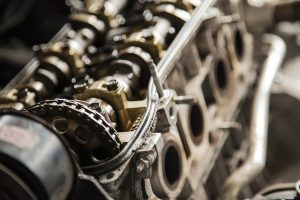
Gaskets are an important part of nearly all automotive engines. Consisting of a flat, precut piece of material, they are designed to seal mating surfaces. From cars and trucks to vans and tractor-trailers, most automotive engines have gaskets. There are typically several types of gaskets in a typical automotive engine, some of which include the following:
The Head Gasket
The head gasket is responsible for sealing the mating surface between the cylinder head and the engine block. Automotive engines consist of a cylinder head on top and an engine block on the bottom. Both of these pieces, however, feature passages for oil, coolant and combustion gases. To prevent these substances from leaking around the mating surface between the cylinder head and engine block, a head gasket is used. The head gasket is placed between the cylinder head and engine block where it creates a leak-proof seal.
Head gaskets are available in a variety of different materials. Here are some of the most common materials used in the construction of head gaskets:
- Steel
- Copper
- Carbon
- Fiberglass
- Composite
The Manifold Gasket
In addition to a head gasket, most automotive engines have a manifold gasket. Also known as the intake gasket, the manifold gasket is responsible for sealing the mating surface between the manifold and the cylinder head. The cylinder head, of course, features the engine’s cylinders. Coolant and air must travel through the manifold and into the cylinder head. The manifold gasket is placed between the manifold and cylinder head. Like with the head gasket, it prevents these substances — specifically air and coolant — from leaking.
The Camshaft Gasket
Most automotive engines have a camshaft gasket as well. They are typically smaller than head gaskets and manifold gaskets. Most camshaft gaskets, in find, are shaped like small rings. These O-ring gaskets are designed to seal the camshaft or camshafts. Some automotive engines have a single camshaft, in which case they only need a single camshaft gasket. Other automotive engines have multiple camshafts, so they require multiple camshaft gaskets.
In Conclusion
Automotive engines require gaskets to function properly. Gaskets are mechanical seals that are designed to seal the mating surface between two or more parts. The head gasket seals the mating surface between the cylinder head and the engine block. The manifold gasket seals the mating surface between the manifold and the cylinder head. And the camshaft gasket seals the mating surface between the camshaft or camshafts and the engine itself.
